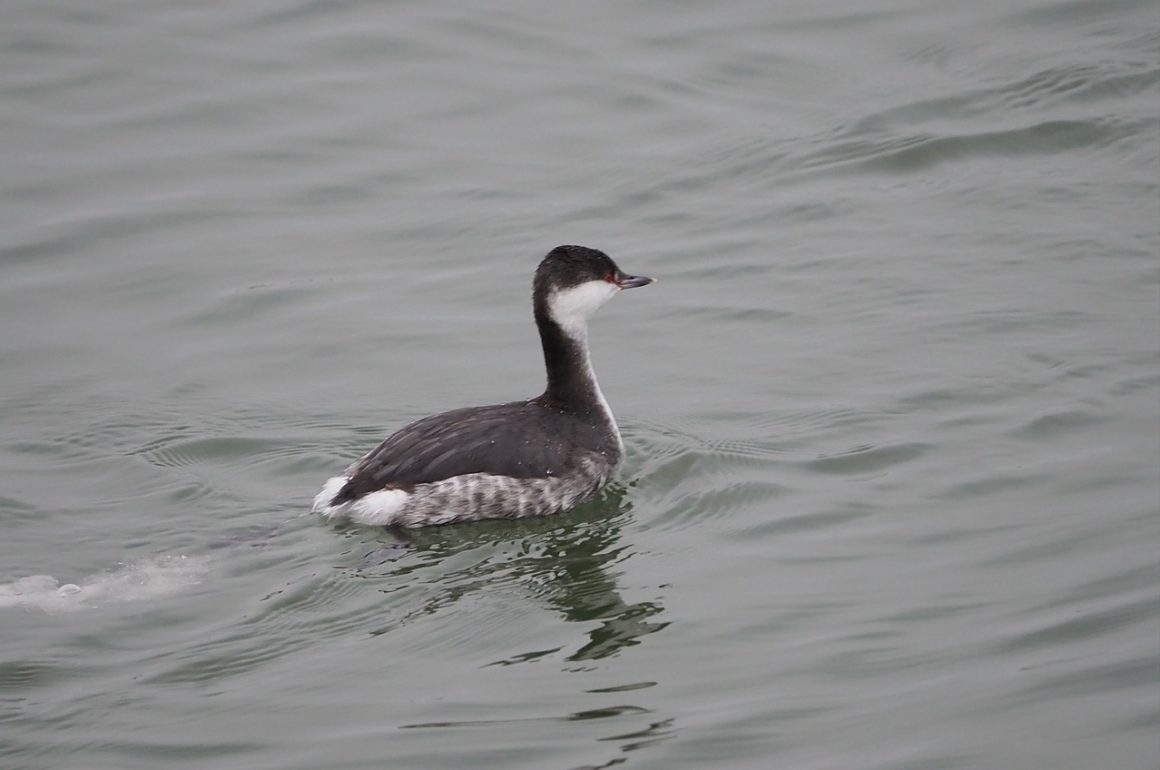
By English standards, Abberton Reservoir is huge. It covers 1,700 acres (700ha), is crossed by two causeways, supports an Essex Wildlife Trust nature reserve, and has numerous designations for its importance for birds – it’s a Special Protection Area (SPA), a Site of Scientific Interest (SSSI) and a Ramsar Site. It’s attraction is easily explained, as it lies close to the salt marshes of the Essex coast, a short flight for any passing bird. In the winter it typically holds around 35,000 wildfowl, but cold weather can push this figure up considerably.
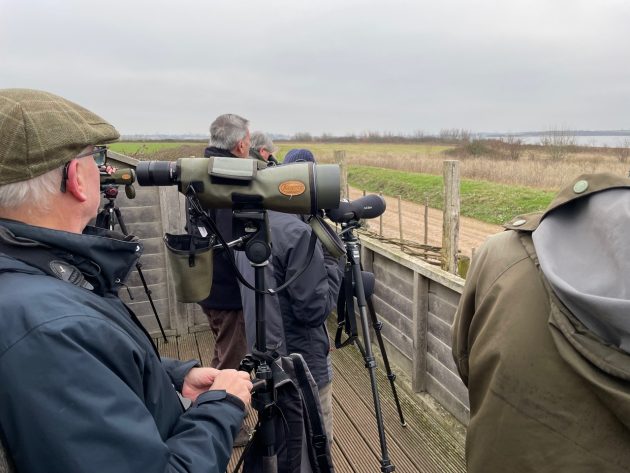
Such big flocks of wildfowl invariably attract the unusual and even the rare. This winter several North American ducks (Ring-necked, Lesser Scaup and Canvasback) have been reported from Abberton, along with good numbers of Goldeneyes and Goosanders, and even a few Smew. Add in a smattering of divers and grebes and you can see why my birding pal Andrew and I decided to visit it earlier this month. And despite dismal, cold weather (no sunshine, but no rain, and a maximum of 3degC), it didn’t disappoint.
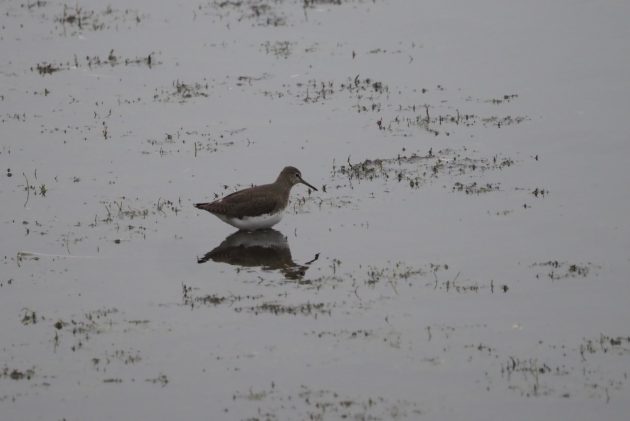
A Green Sandpiper
The one downside to Abberton from our point of view is that it’s a tedious and busy drive to get there. It may be fewer than 40 miles, but our route takes us unavoidably through Colchester. The first major Roman city in Britain, it was once the country’s capital. It’s grown considerably since the Romans were here, and it’s still growing. So despite leaving home at 7.30, it was after 9am that we drew up in the car park on the reservoir’s main causeway.
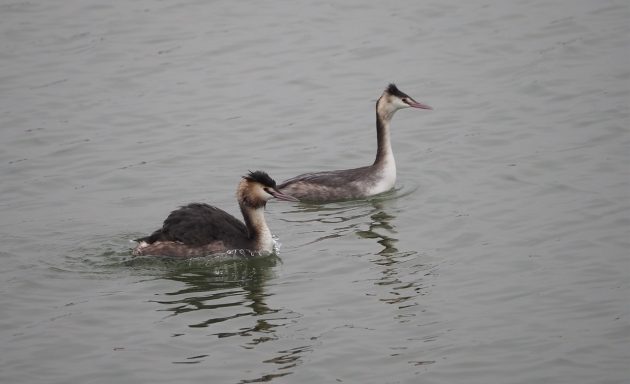
Great crested grebes
Birding from a causeway has its advantages, such as a lack of mud, and a fine commanding view, but on a cold January day it’s a bleak experience. However, almost at once we found birds to warm us up. First up was a Green Sandpiper, a new bird for the year for both of us, and for me species No 111. Some work with the Orange Peril (my Swarovski travel scope) revealed both Goldeneyes and Goosanders, along with numerous Great Crested Grebes and a flock of Tufted Ducks. A bit more scoping produced a flock of at least 11 Black-necked Grebes, a bird I’d missed entirely in the UK last year, plus the bonus of a pair of Slavonian (Horned) Grebes.
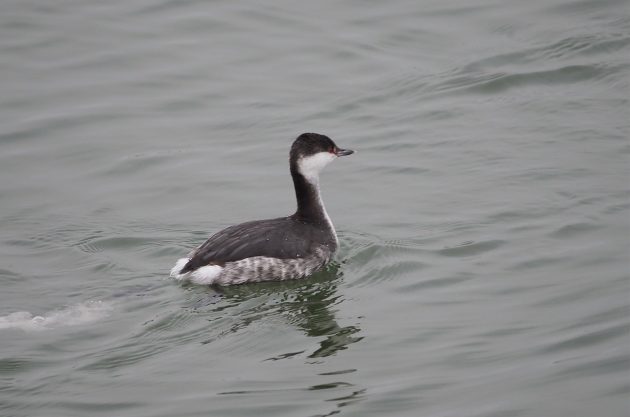
One of a pair of Slavonian Grebes
Abberton, you won’t be surprised to learn, is a popular birding spot. Even at 9am on a bleak January morning there were two or three people scoping the water, so we stopped to chat to one chap who, we discovered, was not only a regular visitor (he lived close by), but also knew what was about. Smew? “Yes, there’s three you can see from Billets Farm. There’s a Spoonbill you should see, while the Black-throated Diver has been showing well. And if you want to see a Great Grey Shrike, there’s a reliable bird at Copt Hall Marshes. It’s only three miles away. You can see it from the car park with a scope, but it’s best to walk down to the sea wall for a better look….” We thanked our new-found friend, Lawrence, and set off to Billets Farm, where we joined a small group of retired gentlemen scoping the water in search of birds.
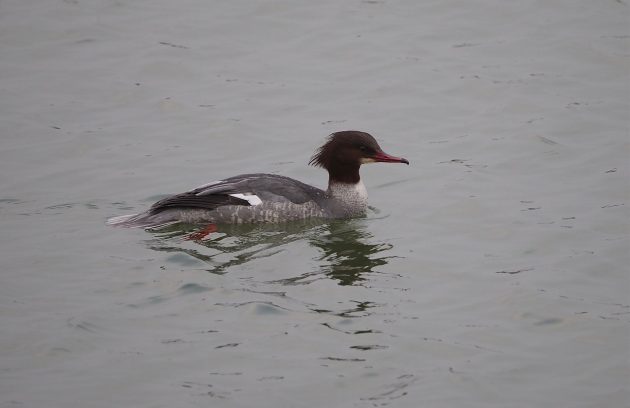
A duck Goosander
The Smew were quickly located – a drake and two ducks. The range was considerable, but a drake Smew, with his wonderfully sharp black and white plumage, is an easy bird to spot. Abberton has always been a reliable site for finding these little sawbills to winter, but in recent years numbers have dwindled. These were my first UK birds for some time – my last sighting had been in Estonia in March 2023.
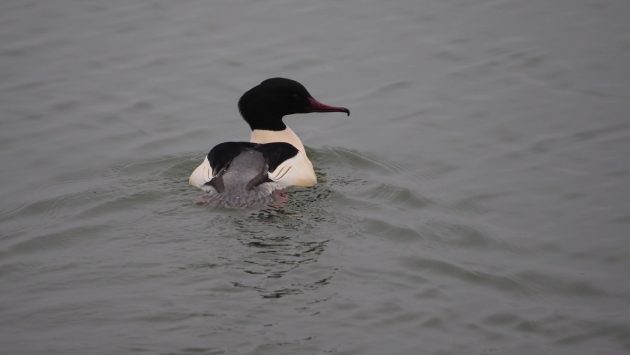
Drake Goosander
With the Smew safely ticked, it was time to look for the various other goodies on offer. The Spoonbill was easy, despite the fact that it was fast asleep, but the Black-throated Diver (Loon) was more difficult, as it was diving repeatedly, and was quite distant. Of the three species of diver that winter regularly in UK waters, the Black-throated is the least numerous, so this was a pleasing sighting. A few minutes later I had the scope focussed on a pair of Red-crested Pochard, another scarce bird in the UK. Add in flocks of Skylarks, Meadow Pipits and Linnets, plus a pair of Stonechats, along with flocks of Wigeon, Mallard, Shoveler and Gadwall, plus a few Pintail, and you will gain an idea of the birds we were enjoying. However, it wasn’t easy. One of our fellow watchers was complaining he couldn’t see a thing, as the cold wind was making his eyes water so badly.
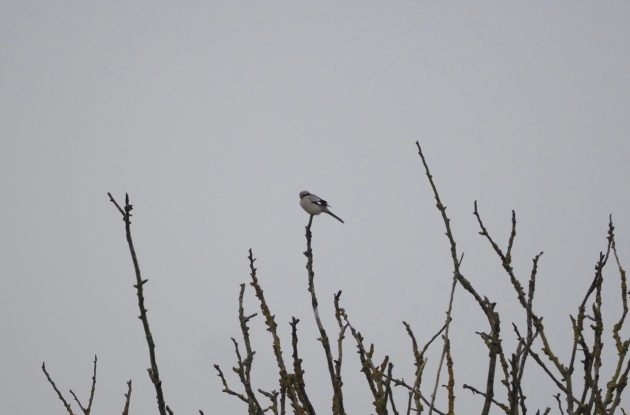
The distant Great Grey Shrike
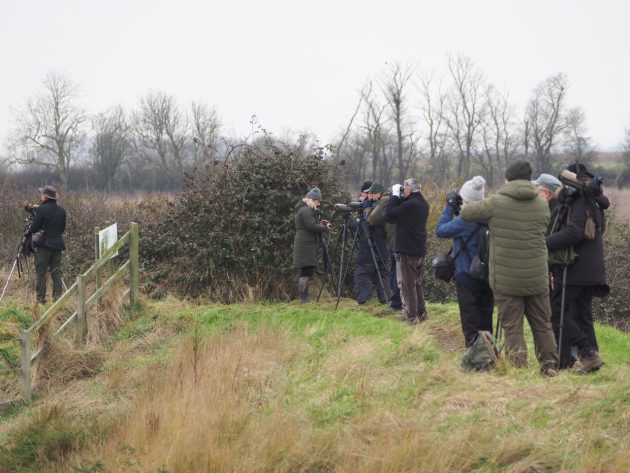
Twitching the shrike
The Copt Hall shrike was our next target. We had been warned that there was a small car park at the site, but fortunately we slotted our car neatly into the last available spot. Great Grey Shrikes have become very scarce winter visitors to the UK, and this bird was rumoured to be the only one in the whole country, so it had attracted quite a twitch, hence the full car park. To get a decent view of the shrike we had to walk down to the sea wall – the bird was frequenting an area of thorn trees. Finding it was simple stuff, as these birds do like to perch on the tops of trees, where they sit and survey their territory. We enjoyed watching it for a while, then trudged back to the car, listening to the rumble of a distant flock of Brent Geese, and enjoying the Mediterranean Gulls swooping over the nearby fields.
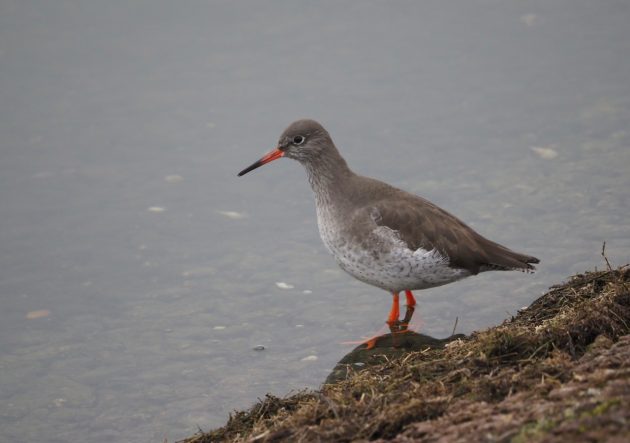
A Redshank photographed from the causeway
After eating our lunch in the car, we drove to the Essex Wildlife Trust’s excellent visitor centre, paid our dues, and went in search of birds once again. Our walk to the hide was delayed slightly by an unexpected encounter with two old birding friends from Kent, Chris and John, neither of whom I’d seen for ages. They hadn’t seen anything exceptional, so we arrived in the hide with no expectations.
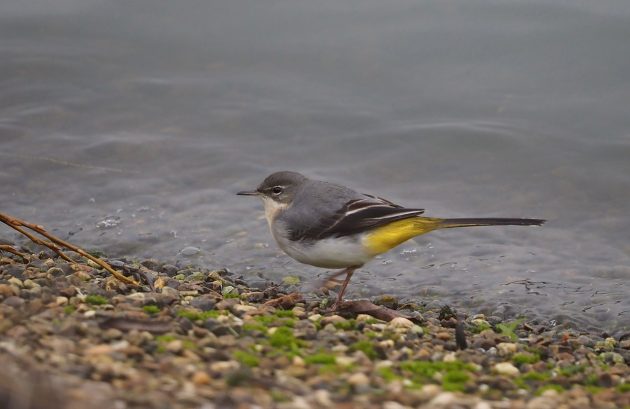
Grey Wagtail, one of several new birds for the year
It was good to sit down, but there didn’t seem to be anything new to see, so I scoped a flock of about 100 Tufted Ducks in the hope of finding the Ring-necked Duck that had been reported. Suddenly there was that little surge of adrenalin when I realised I’d found something good: among the Tufted was a drake with a grey back – a scaup. Its small size and compact proportions confirmed that it wasn’t a Greater Scaup, but a Lesser, a North American vagrant. It had been reported intermittently throughout the winter, but hadn’t been seen for some days, so this was a real prize. (I’ve no doubt that North American readers will be bemused by my enthusiasm for what is such a common bird on the other side of the Atlantic, but the first Lesser Scaup for Britain was only identified as recently as 1987.) Frustratingly, it was too distant to be worth pointing my camera at.
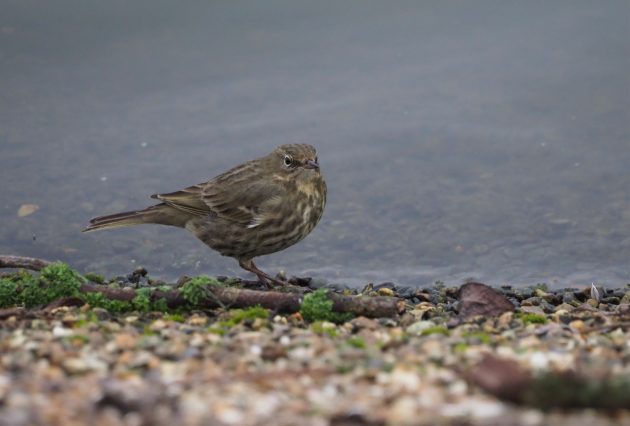
This Rock Pipit was also a new bird for the year
The Lesser Scaup proved to be the best bird of what was really a red-letter day that had added a remarkable number of species to my year list. Just in case you’re wondering, the others I haven’t mentioned were Grey Wagtail and Rock Pipit. The weather had been grim, but the birds, we decided, had more than fulfilled our expectations.
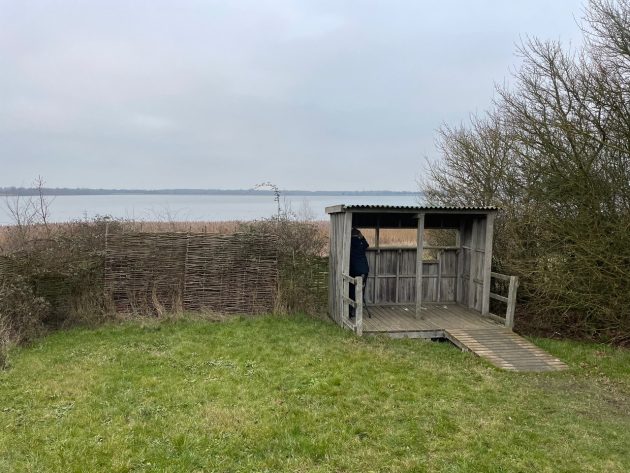
(Photographer’s footnote: it was a horrible day for taking photographs, with dismal light and mainly distant birds.)






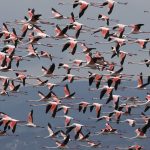




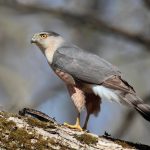
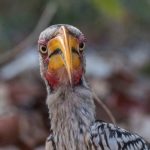
Wow, you did really well despite the conditions. I happened to see a Rock Pipit yesterday, under similar dreadful climatic circumstances, but you sure did much better on grebes and divers. And of course, the Smew is the essence of dapperness amongst birds, right?